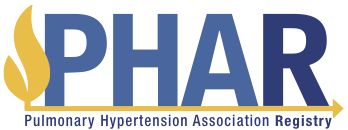| Title | EmPHasis-10 as a Measure of Health-Related Quality of Life in Pulmonary Arterial Hypertension: data from PHAR. |
| Publication Type | Journal Article |
| Year of Publication | 2020 |
| Authors | Borgese, M, Badesch, D, Bull, T, Chakinala, M, DeMarco, T, Feldman, J, H Ford, J, Grinnan, D, Klinger, JR, Bolivar, L, Shlobin, OA, Frantz, RP, Sager, JS, Mathai, SC, Kawut, S, Leary, P, Gray, MP, Popat, RA, Zamanian, RT |
| Corporate/Institutional Authors | PHAR Study Group |
| Journal | Eur Respir J |
| Date Published | 2020 Nov 26 |
| ISSN | 1399-3003 |
| Abstract | <p><b>INTRODUCTION: </b>While the performance of the emPHasis-10 (e10) score has been evaluated against limited patient characteristics within the United Kingdom, there is an unmet need for exploring the performance of the e10 score among PAH patients in the United States.</p><p><b>METHODS: </b>Using the Pulmonary Hypertension Association Registry, we evaluated relationships between the e10 score and demographic, functional, hemodynamics, and additional clinical characteristics at baseline and over time. Furthermore, we derived a minimally important difference (MID) estimate for the e10 score.</p><p><b>RESULTS: </b>We analysed data from 565 PAH (75% female) adults 55.6±16.0 years of age. At baseline, the e10 score had notable correlation with factors expected to impact quality of life in the general population, including age, education level, income, smoking status, and body mass index. Clinically important parameters including six-minute walk distance and B-type natriuretic peptide/N-terminal-pro BNP were also significantly associated with e10 score at baseline and over time. We generated a MID estimate for the e10 score of -6.0 points (range -5.0 to -7.6 points).</p><p><b>CONCLUSIONS: </b>The e10 score was associated with demographic and clinical patient characteristics suggesting that HRQoL in PAH is influenced by both social factors and indicators of disease severity. Future studies are needed to demonstrate the impact of the e10 score on clinical decision-making and its potential utility for assessing clinically important interventions.</p> |
| DOI | 10.1183/13993003.00414-2020 |
| Alternate Journal | Eur Respir J |
| PubMed ID | 33243844 |
| Grant List | K24 HL103844 / HL / NHLBI NIH HHS / United States |
